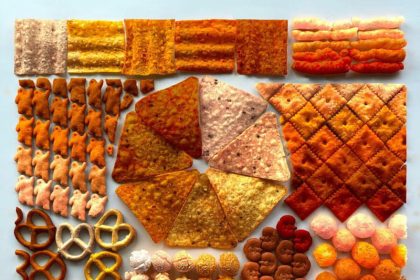The $ 1 million prize is waiting for someone to decipher the ancient line of the Sind Valley.
For more than a century, the ancient line of the “Sind Valley” civilization has surprised researchers. These visual symbols, which have been left by the Sind Valley civilization (a civilization formed more than 5,000 years ago in modern areas of India and Pakistan), have been found on thousands of copper, pottery, bronze and engraved mahogany tablets. But unfortunately, no text -like text has been discovered to help decrypt the lines of a scroll.
Now, to stimulate the decoding process of the line, India’s Tamil Nadawi state has awarded a $ 1 million prize for experts who can successfully interpret the “Sind Valley” line.
“U. When. “We are not able to decipher the line of Sindh Civilization, which was once flourished,” Stalin said. This line remains a mystery even after 5 years. Archaeologists, Tamili computer professionals, and linguists around the world have been trying to decode the line. “To encourage this research, the government will provide a $ 1 million award.”
Stalin made the remarks on the 100th anniversary of the discovery of the Sind Valley civilization by archaeological archaeological named John Marshall. Marshall’s excavations in the 1980s, the cities of Herpea and Mohajaru, both of which were key elements of the ancient community of the Sind Valley, revealed along with the works on which the mysterious “Sindh” script had played.
The Sind Valley civilization, which continued from 5 BC to 5 BC, is one of the first civilizations in the area to flourish in the fertile plains of the Sindh River. Its settlements, including Herpa and Monozaro, at the height of their flourishing period, with infrastructure that included advanced architecture, urban planning, sewage systems and water supply and remains of metallurgical techniques, probably had a population of up to 6,000. This civilization appears to be declining with the drying of the area.
However, its mysterious line, which is seen on about four thousand ancient works collected by the 1980s, has still confused scientists. What has been identified so far is more than 5 distinct symbols that appear to be read from right to left. Any connection to subsequent writing systems is still unclear.
Numerous factors have prevented the decoding of this line. On the one hand, the collection of document texts is small and the inscriptions are remarkable, with a mean length of only five symbols. In addition, the speech language of the document of document or the unknown is unknown, so it is not possible to know exactly what this line is. Because of the inscriptions, even the question is whether this line convey the speech language at all.
Contrary to the decoding of Egyptian hieroglyphs, no bilingual text has been found in inscriptions such as “Day Stone”. While the texts of the ancient Egyptian rulers, such as Ptolemy and Rams, provided clues to decryption hyurogils, no evidence of the leaders or personalities of Sindh civilization are available.
“The Sindh Valley line is perhaps the most important writing system that has not yet been decoded,” said Asek Parpula, a prominent Highologist.
However, technology advances have helped researchers go a little. For example, Nisha Yadaw, a professor at the Indian TATA Fundamental Research Institute, has used a machine learning model to analyze the structure of the Sind Valley line. So far, this group of researchers have identified two symbols that make up 2 % of the text, and a symbol that seems to be a jar with two categories is the most common mark.
However, Yadav told the BBC, “We still do not know that these symbols are complete words, or are part of a word or part of a sentence.”
The Indian government has raised the challenge, with researchers at the University of Kentucky earlier in the year to decrypt the Herkolanium scrolls. These 2,000 -year -olds are severely burned and damaged that have been barely left to this day due to Vesu volcano eruption.
The competition, called the “Challenge of Vesuvo”, has used X -ray imaging with artificial intelligence to detect ink on surfaces and invites participants to decipher the scrolls and has a $ 4,000 prize. The competition has so far led to decoding the word “Porphyras” (a Greek word “purple”) and reading more than two thousand ancient Greek letters in one of the scrolls probably written by the philosopher “Philodus”.
RCO NEWS

















